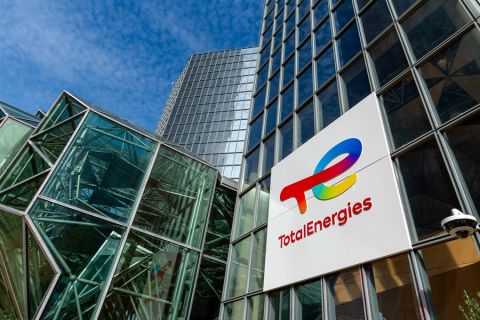
Many operators are focused exclusively on the most prolific portions of the Permian Basin, one of the most resource-rich oil basins in the world, including Parsley Energy whose operation site shown above. (Photo by Tom Fox, courtesy of Oil and Gas Investor)
Stimulation has been on the rise in the Permian Basin, with 379 active wells as of mid-August—more than a twofold increase over the same week last year. With completions increasing in the Permian along with other regional considerations like water shortages, cost effectiveness is more important than ever. The investment is high and can be protected with an effective bacterial control program.
Although biocides make up a very small part of fracturing fluid, an effective bacterial control program can extend the health of the well and maximize the return on the investment during completion.
Low-cost oxidizing biocides like chlorine dioxide are widely used in the Permian. These quick-acting biocides offer an immediate kill topside, but they are not able to control the growth of bacteria downhole. That leaves the operation susceptible to biofouling, microbially influenced corrosion and souring of hydrocarbons. To minimize and help prevent these issues, it is recommended to design and implement an integrated solution during well completion that will provide bacterial control in all phases of the hydraulic fracturing process: preparing the water before entering the well, decontaminating the well and protecting the reservoir.
Breeding ground for issue-causing bacteria
The warm climate, lack of abundant freshwater resources and downhole conditions such as bottomhole temperatures in the Permian Basin create ideal conditions for problematic bacterial growth.
These conditions can impact the profitability and safety of an operation. For example, the buildup of biofilm and occurrence of biofouling can cause plugging and lead to decreased hydrocarbon flow. Modeling studies have shown that uncontrolled growth of microbes and resulting plugging due to biofilm can reduce oil and gas production rates.
Also, hydrocarbon souring can negatively impact the cost per barrel of oil equivalent. It is far more cost-effective to implement an integrated bacterial control solution during well completion than it is to apply a remedial treatment for detrimental sulfides during production. Souring can also pose a potential safety hazard to workers from exposure to H2S, a corrosive, toxic and flammable gas.
Finally, microbially influenced corrosion of topside assets, including holding tanks and pipelines, not only incurs cost for expensive replacement but can potentially lead to devastating loss of hydrocarbons.
Operators in the Permian commonly rely on open-air lined water pits to store water on surface. This water is exposed to high temperatures, providing an ideal breeding ground for bacteria. Layers of biofilm at the bottom of the pits create an anaerobic environment that is conducive to sulfide production before the water has even entered the well. The Permian region also is naturally rich in sulfate, providing bacteria with an essential nutrient for growth. Even if the water source is not standing for long periods of time, it can become rich in bacterial life before it is used for well completion.
Contamination risks
Faced with a high bioburden in the source water, many operators in the Permian use quick-acting oxidizing biocides such as chlorine dioxide for bacterial control. The promise of sterilization and the immediate results when treating water topside may look impressive, but because oxidizing biocides do not kill all of the bacteria in the water, the remaining bacteria have an opportunity to contaminate the system downhole. They also react with sulfides to produce sulfates, effectively converting bacterial waste back into a preferred food source for detrimental microbes. In some cases, the required dose levels of oxidizing biocides are corrosive to the fracturing and surface equipment.
Although oxidizing biocides can be an effective solution for bacterial control on the surface, by themselves they do not provide integrated efficacy, meaning they do not decontaminate the well or protect the reservoir. Downhole bacterial control solutions require endurance in high-temperature and high-salinity environments over an extended period of time, which oxidizers cannot provide.
Decontamination of the well is especially essential in the Permian due to downhole temperatures of 54 C (130 F) to 71 C (160 F) that offer an excellent breeding ground for bacteria. Chlorine dioxide, for example, is unsuitable for protecting the reservoir in the long term as it loses its ability to control the growth of downhole bacteria within two hours. Nonoxidizing biocides like glutaraldehyde, however, have shown efficacy for up to weeks at typical downhole temperatures. Preservative biocides like dimethyloxazolidine (DMO) and tris (hydroxymethyl) nitromethane (THNM) are the newest technologies available for bacterial control and offer bacterial control in the reservoir. The duration of such extended protection varies with biocide dosage, ranging from a few weeks past fl owback phase to about eight to 12 weeks in production phase.
Integrated solutions provide the quick kill to prepare the water as well as the downhole heat tolerance and extended lifespan needed to decontaminate the well and protect the reservoir. As an example, glutaraldehyde or glutaraldehyde/quaternary amine (quat) blends combined with a preservative chemistry like DMO or THNM can prepare the water, decontaminate the well and protect the reservoir, offering both a quick kill on the surface and downhole protection for months.
As the graph shows, chlorine dioxide suffers steep declines in its ability to control the growth of microorganisms at downhole temperatures common in the Permian. Glutaraldehyde, on the other hand, retains its killing power at temperatures common to the region and protects the reservoir for months when used in combination with long-term bacterial inhibitors like DMO or THNM.
 Chlorine dioxide, widely used in the Permian for its low cost and quick kill, leaves operations susceptible to bacteria. At temperatures common to the Permian, glutaraldehyde retains killing power and can offer long-term reservoir protection in all phases of the hydraulic fracturing process when used in an integrated microbial control program. (Source: Dow Chemical)
Chlorine dioxide, widely used in the Permian for its low cost and quick kill, leaves operations susceptible to bacteria. At temperatures common to the Permian, glutaraldehyde retains killing power and can offer long-term reservoir protection in all phases of the hydraulic fracturing process when used in an integrated microbial control program. (Source: Dow Chemical)
Combining chemistry, application expertise
Halliburton is bringing tailored, engineered bacterial control solutions to the Permian to combat the most common issues; extend the health of wells over normal life cycles; and maximize cost efficiency using the expertise, advanced capabilities and broadest portfolio of biocides from Dow Microbial Control.
Halliburton’s application expertise and longstanding relationships allow the company to recommend and implement solutions customized to its clients’ strategic and budgetary needs while helping maximize efficiency and minimize HSE exposure. The company can then integrate the solution into the stimulation treatment for effective application delivery. Field-testing supports the technical recommendations for a delivery of operational and financial benefits from effective microbial control in the Permian.
As stimulation activity is increasing in the Permian and large investments are made, it is important for operators to consider the impact that their biocide program has on the health and profitability of a well. With an integrated approach to bacterial control that prepares the water pretreatment, decontaminates the well and protects the reservoir, oil and gas operators can avoid the pitfalls of unchecked bacterial growth and produce high-value hydrocarbons.
References available.
Have a story idea for Shale Solutions? This feature highlights technologies and techniques that are helping shale players overcome their operating challenges. Submit your story ideas to Group Managing Editor Jo Ann Davy at jdavy@hartenergy.com.
Recommended Reading
Ithaca Energy to Buy Eni's UK Assets in $938MM North Sea Deal
2024-04-23 - Eni, one of Italy's biggest energy companies, will transfer its U.K. business in exchange for 38.5% of Ithaca's share capital, while the existing Ithaca Energy shareholders will own the remaining 61.5% of the combined group.
EIG’s MidOcean Closes Purchase of 20% Stake in Peru LNG
2024-04-23 - MidOcean Energy’s deal for SK Earthon’s Peru LNG follows a March deal to purchase Tokyo Gas’ LNG interests in Australia.
TotalEnergies to Acquire Remaining 50% of SapuraOMV
2024-04-22 - TotalEnergies is acquiring the remaining 50% interest of upstream gas operator SapuraOMV, bringing the French company's tab to more than $1.4 billion.
TotalEnergies Cements Oman Partnership with Marsa LNG Project
2024-04-22 - Marsa LNG is expected to start production by first quarter 2028 with TotalEnergies holding 80% interest in the project and Oman National Oil Co. holding 20%.
Is Double Eagle IV the Most Coveted PE-backed Permian E&P Left?
2024-04-22 - Double Eagle IV is quietly adding leases and drilling new oil wells in core parts of the Midland Basin. After a historic run of corporate consolidation, is it the most attractive private equity-backed E&P still standing in the Permian Basin?




